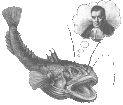UW Aquatic & Fishery Sciences Quantitative Seminar
Natasha Gownaris
Post-Doctoral Research Scientist, UW Biology
Bachelor Birds: Why Models Must Consider Seabird Sex
Abstract
Punta Tombo, Argentina is the world's largest colony (~200,000 breeding pairs) of Magellanic penguins (Spheniscus magellanicus) and has declined an average of 1%/year since 1987. Using 33 years of banding data on 45,000 known-age penguins, we developed a Hidden Markov mark-recapture model with two levels of uncertainty in state assignment (breeding state and sex). We had two goals, to: 1) understand the drivers of the colony's decline, and 2) highlight the importance of including sex in demographic studies. Only 20% of mark-recapture studies over the past decade consider sex, despite existing methodological solutions to sex assignment uncertainty. Sex was a significant driver of variability in survival, with males showing annual juvenile survival rates as high as 2.5 times that of females. Female survival is closest to male survival in adults (age 2+) and in years of high overall survival. These findings suggest that females may be hit hardest when they are learning to forage (i.e. first year at sea) and in years of poor oceanographic conditions. The model results help to explain our findings that the sex ratio at Punta Tombo has increased significantly over time, from 1.2 (M:F) in 1987 to 2.5 in 2015, and has been coupled with a significant decline in male breeding propensity. Population trajectory simulations show that assuming average survival provides misleading information on population health. Female-biased mortality is likely a consequence of the smaller size of females relative to males, as size influences energetics and diet. Consequently, periods of low resource availability may have disproportionate effects on the smaller sex in species with sexual size dimorphism.

